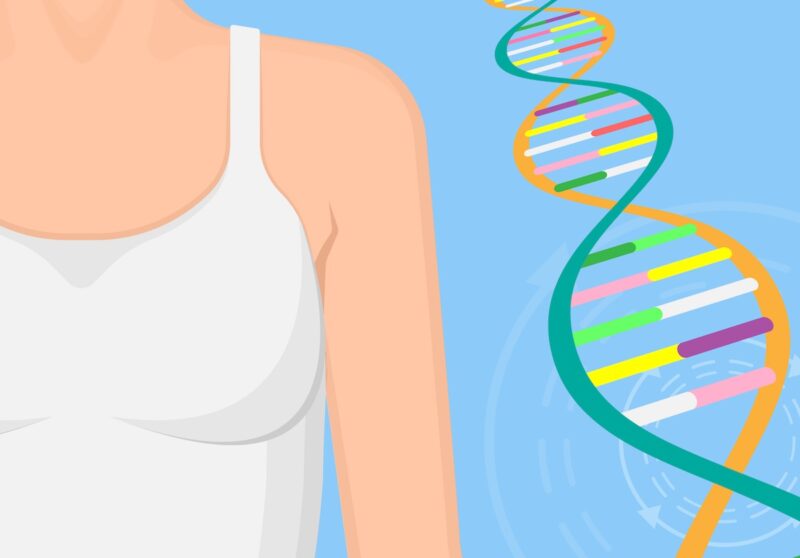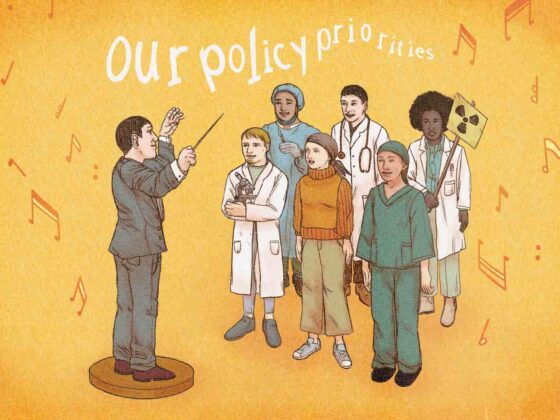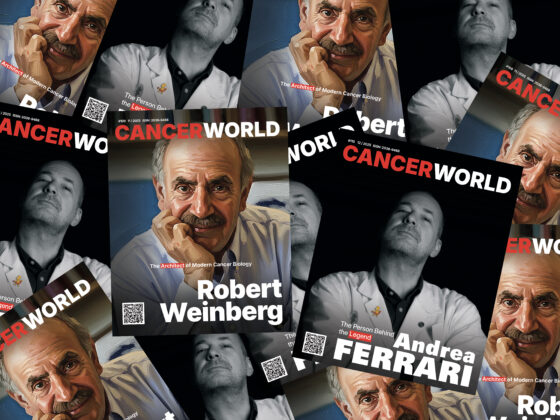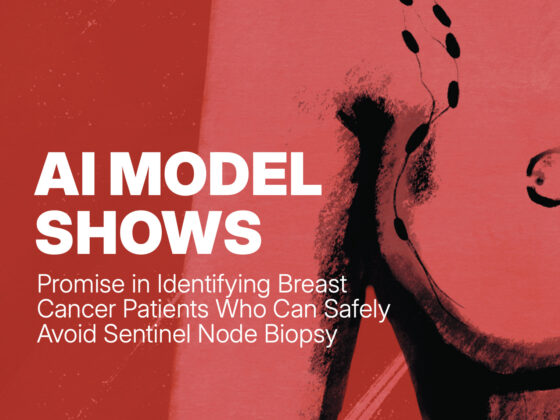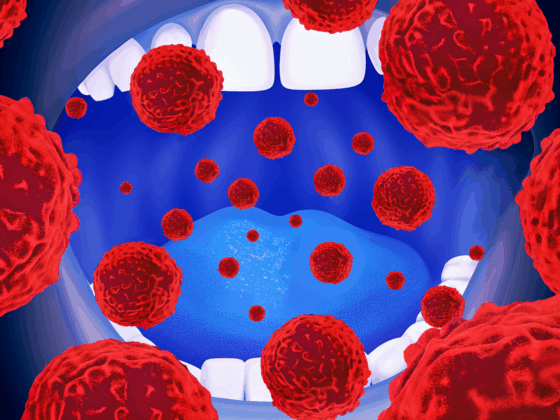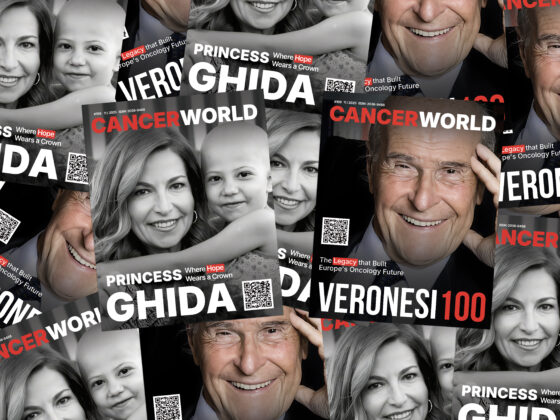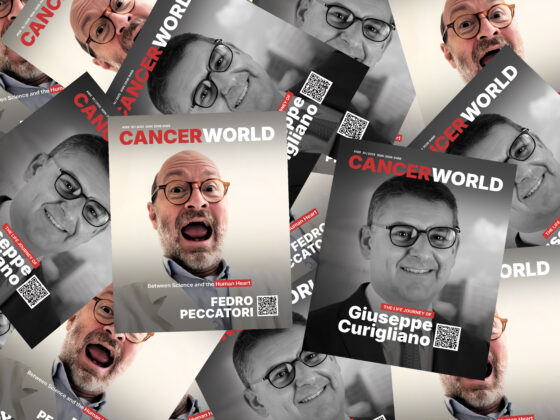Two large case control studies have defined eight genes considered useful to include on genetic panels for predicting risk of breast cancer. The two studies, one by The Breast Cancer Association Consortium (BCAC), led by Doug Easton in Cambridge, and the other by U.S. investigators, both published in the New England Journal of Medicine, independently identified eight genetic variants with significant risk (BRCA1, BRCA2, PALB2, BARD1, RAD51C, RAD51D, ATM, and CHEK2). Furthermore, the BCAC study found significant associations for MSH6 and the U.S. study for CDH1.
“Genetic testing for breast cancer risk has become an important part of clinical practice, particularly for women with a family history of the disease. These studies should provide clarity by helping to define the appropriate set of genes to be used in genetic testing and to eliminate genes that we don’t believe are helpful,” explains Doug Easton, Professor of Genetic Epidemiology at the University of Cambridge. “One of the reasons the literature has been so confusing is that up to now studies have been too small to draw conclusions.”
For the BCAC study, Easton and colleagues designed a panel of 34 putative susceptibility genes (representative of genes on commercial panels) to sequence germline DNA from more than 60,000 women with breast cancer and more than 53,000 controls. The subjects were recruited from 25 countries in Europe, Asia, North and South America and Australasia, through participating in the BCAC. The genes were studied from stored blood samples. In the study, funded by the European Union Horizon 2020 programme, the team explored the percentage of breast cancer cases and healthy controls carrying mutations (or variants) in each of the 34 genes under consideration, and calculated the odds ratio (OR) for mutations being more likely to be found in women with breast cancer.
Results showed that protein-truncating variants in ATM (OR 2.10), BRCA1 (0R 10.57), BRCA2 (OR 5.85), CHEK2 (OR 2.54), and PALB2 (OR 5.02) were associated with significant risk for breast cancer (P value < 0.0001) . The study also found more modest associations for BARD1 (OR 2.09), RAD51C (OR 1.93), RAD51D (OR 1.80), and TP53 (OR 3.06), (P value < 0.05).
In the second study, Fergus Couch, (Mayo Clinic in Rochester, Minnesota) and colleagues used the CARRIERS consortium (which included 17 studies) to look at a panel of 28 cancer-predisposing genes in 32,247 women with breast cancer and 32,544 unaffected controls. Again, the team calculated the OR for each mutation (or variant) being more likely to be found in women with breast cancer. The team found pathogenic variants in 12 established breast cancer predisposition genes in 5.03% of women with breast cancer compared with 1.63% of controls. They went on to show that BRCA1 had an OR of 7.62, BRCA2 an OR of 5.23, PALB2 an OR of 3.83, BARD1 an OR of 1.37, RAD51C an OR of 1.20 and RAD51D an OR of 1.72.
“The consistency between the two studies gives us a lot of confidence that the genes identified are really associated with breast cancer risk,” Easton told Cancer World. Later, he adds, the two teams hope to combine both sets of data to achieve even more reliable estimates and provide more information on any genes where there remains uncertainty.
Easton plans to incorporate the eight genes into the next version of BOADICEA (Breast and Ovarian Analysis of Disease Incidence and Carrier Estimation Algorithm), a computer programme developed at the Centre for Cancer Genetic Epidemiology in Cambridge to calculate 10 year risk of women developing breast and ovarian cancers. In addition to genetic risk, BOADICEA takes into consideration other risk factors. such as mammographic density, reproductive factors (age at menarche, menopause, first live birth and number of births), exogenous hormonal factors (use of oral contraceptives and postmenopausal hormone replacement therapy), anthropometric factors (such as height and body mass index), and life style factors (such as alcohol intakes).
In an accompanying editorial, Steven Narod (Women’s College Research Institute, Toronto), writes, “These two studies pose important clinical questions. Should we start discussing with our patients each gene shown to have an association with breast cancer risk in these two studies before offering a panel test? Should the 28 extraneous genes be removed from the panels?”
Narod goes on to question how ‘well equipped’ clinicians would be to advise patients found to have a variant in say CHEK2 and ATM. “The value of BRCA1 and BRCA2 testing is not really in question, but justification for this testing is largely derived from the fact that damaging variants in these genes confer a predisposition to ovarian cancer, which is preventable with salpingo-oophorectomy. For genes that do not confer a predisposition to ovarian cancer, the risk-benefit relationship of testing is more nuanced.”

